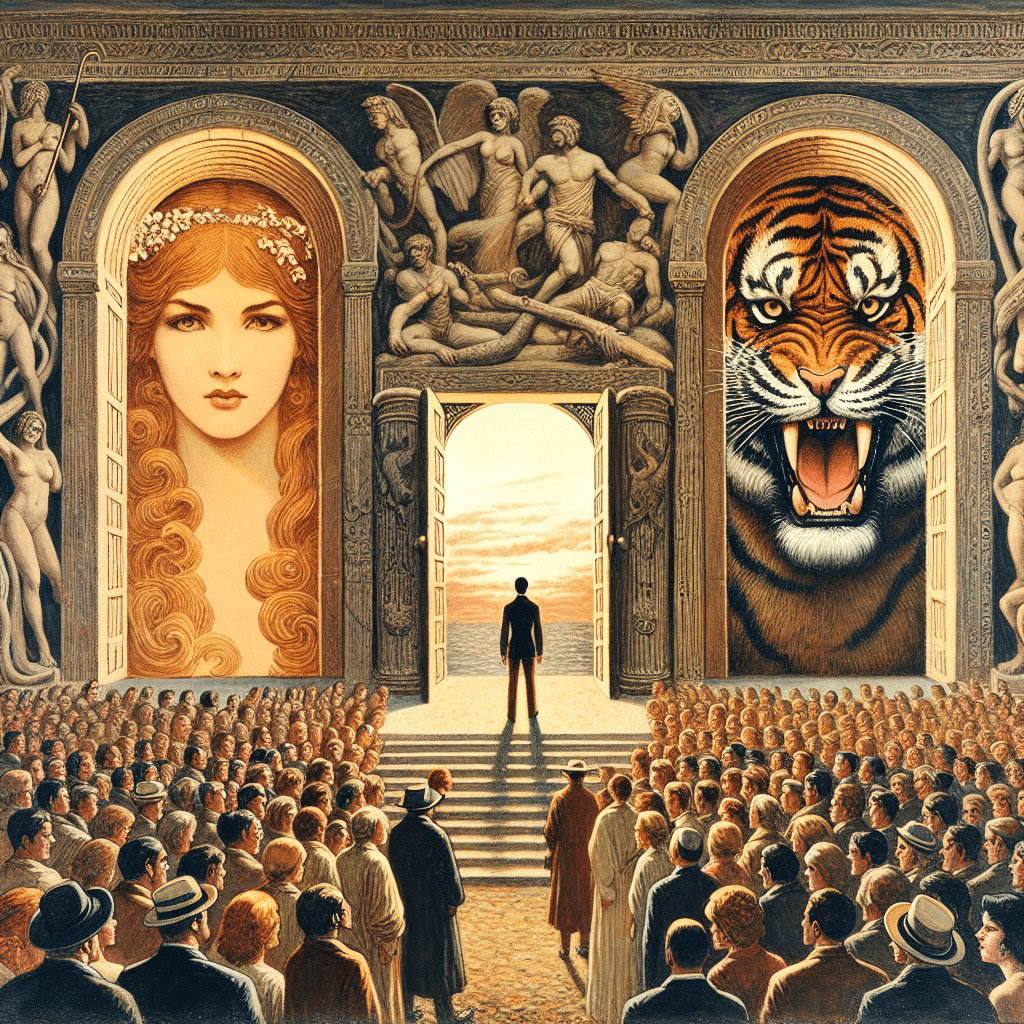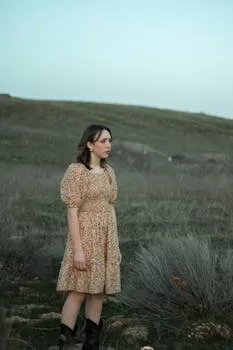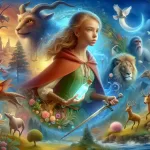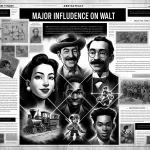-
Indholdsfortegnelse
“Explore the tantalizing dilemma of choice and consequence in ‘The Lady or the Tiger’: a tale of love, jealousy, and the human heart’s deepest fears.”
“The Lady or the Tiger” is a short story by Frank R. Stockton that explores themes of choice, jealousy, and the nature of human emotion. Set in a semi-barbaric kingdom, the narrative revolves around a unique form of justice where the accused must choose between two doors: one concealing a beautiful lady and the other a fierce tiger. The story centers on the fate of the protagonist, a young man in love with the king’s daughter, as he faces the ultimate test of his fate. The characters, including the king, the princess, and the young man, embody the complexities of love, desire, and the moral dilemmas that arise from the choices we make. The open-ended conclusion leaves readers pondering the implications of choice and the unpredictable nature of human relationships.
Summary of The Lady or the Tiger
“The Lady or the Tiger,” a short story by Frank R. Stockton, presents a compelling narrative that explores themes of choice, jealousy, and the complexities of human emotion. Set in a semi-barbaric kingdom, the story revolves around a unique form of justice administered by the king, who believes in a system that allows the accused to choose their fate. The protagonist, a young man who is in love with the king’s daughter, finds himself on trial for the crime of loving her. The king’s method of determining guilt or innocence involves a dramatic choice between two doors: behind one door is a beautiful lady, chosen as a suitable bride for the young man, while behind the other is a fierce tiger, symbolizing death and punishment.
As the narrative unfolds, the young man stands before the doors, aware that his fate rests not only on his own decision but also on the feelings of the princess. The story delves into the psychological turmoil experienced by the young man, who is torn between the desire for life and the fear of the unknown. Meanwhile, the princess, who harbors deep jealousy towards the lady behind the door, grapples with her own emotions. She is faced with a heart-wrenching dilemma: should she allow her lover to choose the lady and live, or should she guide him towards the tiger, ensuring his death but also preventing him from being with another woman?
The tension escalates as the young man looks to the princess for guidance, and in that moment, the reader is drawn into the emotional conflict that defines the story. The princess, consumed by jealousy and love, ultimately makes a choice that will determine the fate of her lover. In a moment of intense suspense, she discreetly signals to him which door to choose. However, the story concludes ambiguously, leaving readers to ponder whether the young man will choose the door that leads to life or death. This unresolved ending serves to heighten the emotional stakes and invites readers to reflect on the nature of love, trust, and the consequences of choice.
The themes of jealousy and the duality of human nature are intricately woven throughout the narrative. The princess’s internal struggle highlights the complexities of love, as her desire for her lover conflicts with her possessiveness and jealousy. This duality is mirrored in the king’s justice system, which presents a stark choice between life and death, beauty and brutality. The story ultimately raises profound questions about the nature of choice itself. Is it truly a choice if it is influenced by external emotions and pressures? The ambiguity of the ending reinforces this theme, as readers are left to grapple with the implications of the characters’ decisions.
In conclusion, “The Lady or the Tiger” is a masterful exploration of human emotion and the intricacies of choice. Through its vivid characters and suspenseful plot, Stockton invites readers to engage with the moral dilemmas faced by the young man and the princess. The unresolved ending serves as a powerful reminder of the complexities inherent in love and jealousy, leaving a lasting impression that encourages reflection on the nature of desire and the consequences of our choices. As such, the story remains a timeless examination of the human condition, resonating with readers across generations.
Analysis of the Main Themes
In Frank R. Stockton’s short story “The Lady, or the Tiger?”, the central themes revolve around the complexities of human emotion, the nature of choice, and the duality of love and jealousy. The narrative unfolds in a semi-barbaric kingdom where the king has devised a unique method of justice that reflects his own understanding of morality. This system presents the accused with a choice between two doors: behind one is a beautiful lady who he must marry, and behind the other is a fierce tiger that will lead to his certain death. This mechanism serves as a profound commentary on the unpredictability of human nature and the consequences of choice.
One of the most prominent themes in the story is the conflict between love and jealousy. The protagonist, the young man, is deeply in love with the king’s daughter, who is equally enamored with him. However, their love is complicated by the king’s jealousy and the societal expectations that dictate their fates. The princess’s internal struggle is a focal point of the narrative, as she grapples with her feelings of love for her lover and her intense jealousy towards the woman behind one of the doors. This duality illustrates the complexity of human emotions, suggesting that love can coexist with jealousy, leading to destructive outcomes. The princess’s ultimate decision—whether to allow her lover to choose the door that leads to her or to the tiger—highlights the theme of choice and its inherent consequences.
Moreover, the story delves into the theme of fate versus free will. The young man is presented with a seemingly straightforward choice, yet the outcome is shrouded in uncertainty. The princess’s knowledge of what lies behind each door complicates the notion of free will, as her emotions influence the decision-making process. This interplay between fate and free will raises questions about the extent to which individuals control their destinies. The young man’s fate is not solely in his hands; it is also contingent upon the princess’s feelings and decisions. This theme resonates with readers, prompting them to reflect on their own experiences with choice and the unpredictable nature of life.
Additionally, the story explores the concept of societal norms and their impact on individual behavior. The king’s barbaric justice system reflects a society that values spectacle and punishment over compassion and understanding. This societal backdrop serves to amplify the characters’ internal conflicts, as they navigate their desires within a rigid framework. The princess’s dilemma is not just a personal struggle; it is also a reflection of the societal pressures that dictate her actions. The story critiques the arbitrary nature of societal norms, suggesting that they can lead to tragic outcomes when individuals are forced to conform to expectations that do not align with their true selves.
In conclusion, “The Lady, or the Tiger?” presents a rich tapestry of themes that explore the intricacies of human emotion, the nature of choice, and the influence of societal norms. Through the lens of love and jealousy, Stockton invites readers to ponder the complexities of human relationships and the often unpredictable consequences of our choices. The story’s ambiguous ending further emphasizes these themes, leaving readers to grapple with the unresolved tension between love and jealousy, fate and free will, ultimately reflecting the multifaceted nature of the human experience.
Character Study: The King
In Frank R. Stockton’s short story “The Lady, or the Tiger?”, the character of the king plays a pivotal role in shaping the narrative and its underlying themes. As the sovereign of a semi-barbaric kingdom, the king embodies the duality of civilization and savagery, reflecting the complexities of human nature. His character is not merely a ruler but a representation of the arbitrary nature of justice and the consequences of unchecked power. The king’s system of trial by chance, where a condemned man must choose between two doors—one concealing a beautiful lady and the other a fierce tiger—serves as a critical commentary on the nature of fate and free will.
The king’s personality is marked by a blend of cruelty and a sense of theatricality. He revels in the spectacle of his justice system, which he has designed to entertain himself and his subjects. This penchant for drama underscores his desire for control and dominance, as he manipulates the lives of his subjects for his own amusement. The king’s arbitrary method of determining guilt or innocence highlights the absurdity of his rule, as it reduces human lives to mere entertainment. This aspect of his character invites readers to question the morality of a justice system that prioritizes spectacle over fairness.
Moreover, the king’s relationship with his daughter, the princess, adds another layer to his character. He is portrayed as a possessive father who is deeply concerned about his daughter’s romantic entanglements. His desire to control her fate is evident in his reaction to her love for the young man who is put on trial. The king’s jealousy and authoritarian nature are revealed through his willingness to subject the young man to the whims of his barbaric justice system, demonstrating how personal emotions can intertwine with the exercise of power. This dynamic raises questions about the nature of love and loyalty, as the princess is torn between her affection for the young man and her loyalty to her father.
The king’s semi-barbaric nature is further emphasized by his belief in the necessity of punishment as a means of maintaining order. He views the trial as a reflection of his own authority, believing that the outcome will reinforce his power. However, this belief is ultimately flawed, as it disregards the complexities of human emotions and relationships. The king’s rigid adherence to his system of justice reveals a fundamental misunderstanding of the human condition, as he fails to recognize that love, jealousy, and desire cannot be easily categorized or controlled.
In conclusion, the character of the king in “The Lady, or the Tiger?” serves as a critical lens through which readers can explore themes of power, justice, and the duality of human nature. His semi-barbaric approach to governance and his complex relationship with his daughter highlight the inherent contradictions within his character. As a ruler who prioritizes spectacle over morality, the king ultimately embodies the tension between civilization and savagery, prompting readers to reflect on the nature of authority and the consequences of its abuse. Through the king’s actions and motivations, Stockton invites us to consider the broader implications of justice and the unpredictable nature of human desires, leaving us to ponder the delicate balance between love and power in our own lives.
Character Study: The Princess
In Frank R. Stockton’s short story “The Lady, or the Tiger?”, the character of the princess serves as a pivotal figure, embodying the complexities of love, jealousy, and the struggle for power. The narrative unfolds in a semi-barbaric kingdom where the king has devised a unique system of justice, one that places the fate of the accused in the hands of chance. The princess, the king’s daughter, is deeply entwined in this system, particularly when her lover is put on trial. Her character is marked by a profound internal conflict that reveals the intricacies of human emotion and the moral dilemmas that accompany love.
Initially, the princess is portrayed as a figure of privilege and beauty, yet her status does not shield her from the tumultuous feelings that arise when she learns of her lover’s predicament. The depth of her love is evident, but it is equally matched by a fierce jealousy that complicates her emotions. As she grapples with the possibility of losing her beloved to another woman, the reader is drawn into her psychological turmoil. This duality of love and jealousy is a central theme in the story, illustrating how passion can lead to destructive impulses. The princess’s internal struggle is not merely about her love for the young man; it also reflects her desire for control over her own fate and that of her lover.
As the narrative progresses, the princess’s character becomes increasingly complex. She is not merely a passive figure waiting for her fate to unfold; rather, she is an active participant in the drama that ensues. When her lover stands before the two doors, one concealing a beautiful woman and the other a ferocious tiger, the princess is faced with a critical choice. Her knowledge of what lies behind each door places her in a position of power, yet this power is fraught with moral ambiguity. The reader witnesses her struggle as she weighs her love against her jealousy, contemplating whether to guide her lover toward life or death. This moment encapsulates the essence of her character, revealing the depths of her emotions and the lengths to which she is willing to go to secure her desires.
Moreover, the princess’s decision-making process highlights the theme of choice and consequence. Her internal conflict raises questions about the nature of love and the sacrifices it demands. In a moment of intense emotional turmoil, she must confront the reality that her actions could lead to her lover’s demise or his happiness with another. This tension between love and jealousy ultimately culminates in a moment of ambiguity, leaving readers to ponder the true nature of the princess’s feelings. Did she choose to condemn her lover to death out of jealousy, or did she sacrifice her own happiness to spare him from a life with another woman?
In conclusion, the princess in “The Lady, or the Tiger?” is a richly developed character whose emotional landscape reflects the complexities of human relationships. Her struggle with love, jealousy, and the desire for control serves as a microcosm of the broader themes present in the story. Through her character, Stockton invites readers to explore the moral dilemmas inherent in love and the choices that define our lives. Ultimately, the princess embodies the tension between passion and reason, leaving an indelible mark on the narrative and prompting reflection on the nature of desire and its consequences.
The Role of Choice and Consequence
In Frank R. Stockton’s short story “The Lady or the Tiger,” the intricate interplay of choice and consequence serves as a central theme that drives the narrative and engages the reader’s imagination. The story unfolds in a semi-barbaric kingdom where the king has devised a unique method of administering justice, one that places the fate of the accused in the hands of chance. This system, which involves a choice between two doors—one concealing a beautiful lady and the other a fierce tiger—highlights the profound implications of decision-making and the unpredictable nature of human emotions.
At the heart of the story lies the protagonist, the young man who is put on trial for loving the king’s daughter. His fate hinges on a choice that is not entirely his own, as he must rely on the whims of chance to determine whether he will be rewarded with love or face a gruesome death. This scenario encapsulates the essence of choice, illustrating how external forces can dictate the outcomes of our lives. The young man’s predicament reflects the broader human experience, where individuals often find themselves at the mercy of circumstances beyond their control. The tension between free will and fate is palpable, as the young man stands before the doors, embodying the struggle between hope and despair.
Moreover, the story delves into the psychological dimensions of choice, particularly through the character of the king’s daughter. She is faced with a harrowing decision of her own: to reveal the door that conceals the lady or the one that hides the tiger. Her internal conflict is emblematic of the complexities of love and jealousy, as she grapples with the potential consequences of her choice. If she directs her lover to the lady, she risks losing him to another woman, while guiding him to the tiger would ensure his death but preserve her possessiveness. This duality of choice underscores the theme that decisions are often fraught with emotional weight, revealing the darker aspects of human nature.
As the narrative progresses, the reader is drawn into the moral ambiguity of the characters’ choices. The king’s daughter, despite her love for the young man, is portrayed as a figure capable of both tenderness and cruelty. Her decision-making process reflects the broader theme of consequence, as each choice carries with it a ripple effect that extends beyond the immediate moment. The story ultimately leaves the reader questioning the nature of love and loyalty, as well as the ethical implications of choice. The unresolved ending, where the young man is left to choose between the two doors, serves as a powerful commentary on the unpredictability of life and the inherent risks associated with making choices.
In conclusion, “The Lady or the Tiger” masterfully explores the role of choice and consequence through its characters and their dilemmas. The story invites readers to reflect on the complexities of decision-making, emphasizing that choices are rarely straightforward and often come with significant repercussions. By intertwining themes of love, jealousy, and fate, Stockton crafts a narrative that resonates with the human experience, prompting contemplation on the nature of choice and the unpredictable paths that life may take. Ultimately, the story serves as a reminder that every decision we make can lead to unforeseen consequences, shaping our destinies in ways we may not fully comprehend.
Symbolism of the Lady and the Tiger
In Frank R. Stockton’s short story “The Lady, or the Tiger?”, the symbolism of the lady and the tiger serves as a profound exploration of human emotions, choices, and the complexities of love and jealousy. The narrative revolves around a semi-barbaric king who devises a unique form of justice, wherein the accused must choose between two doors: behind one lies a beautiful lady, and behind the other, a fierce tiger. This duality encapsulates the central conflict of the story, representing not only the stark choices faced by the protagonist but also the broader themes of desire, fate, and the nature of human instincts.
The lady symbolizes the ideal of love and societal acceptance. She represents the king’s choice for his daughter’s suitor, embodying the societal norms and expectations of romantic relationships. In this context, the lady is not merely a passive figure; she is a reflection of the protagonist’s potential future, one filled with love, companionship, and societal approval. However, her presence also raises questions about the nature of choice and the implications of societal pressures on personal desires. The lady, while alluring, is also a reminder of the constraints imposed by society, suggesting that love can often be dictated by external factors rather than genuine emotion.
Conversely, the tiger symbolizes the primal instincts of jealousy, fear, and the darker aspects of human nature. The tiger’s ferocity represents the consequences of unchecked emotions and the potential for destruction that lies within every individual. In the story, the tiger serves as a metaphor for the dangers that accompany passion and desire, illustrating how jealousy can lead to dire outcomes. The choice between the lady and the tiger thus becomes a representation of the internal struggle between civilized behavior and primal instincts, highlighting the tension between societal expectations and personal desires.
As the narrative unfolds, the protagonist is faced with a critical decision that encapsulates the essence of the story’s symbolism. The choice between the lady and the tiger is not merely a matter of life and death; it is a reflection of the complexities of love and the inherent uncertainties that accompany it. The protagonist’s dilemma illustrates the conflict between the desire for love and the fear of betrayal, ultimately leading to a moment of profound ambiguity. This ambiguity is central to the story’s impact, as it leaves readers questioning the nature of choice and the consequences that arise from it.
Moreover, the symbolism of the lady and the tiger extends beyond the immediate narrative, inviting readers to reflect on their own experiences with love, jealousy, and choice. The story challenges the notion of clear-cut decisions, suggesting that life is often filled with shades of gray rather than black and white. In this way, Stockton’s work resonates with the complexities of human relationships, emphasizing that the choices we make are often influenced by a myriad of factors, including societal expectations, personal desires, and the unpredictable nature of human emotions.
In conclusion, the symbolism of the lady and the tiger in Stockton’s narrative serves as a powerful commentary on the intricacies of love, choice, and human nature. By juxtaposing the ideals of romantic love with the primal instincts of jealousy and fear, the story invites readers to contemplate the complexities of their own choices and the underlying motivations that drive them. Ultimately, the ambiguity surrounding the protagonist’s decision leaves a lasting impression, prompting reflection on the nature of desire and the often unpredictable outcomes of our choices.
Reader Interpretations and Theories
In exploring the multifaceted interpretations and theories surrounding Frank R. Stockton’s short story “The Lady, or the Tiger?”, readers often find themselves grappling with the ambiguous nature of the narrative’s conclusion. The story presents a unique dilemma faced by the protagonist, who must choose between two doors, behind one of which is a beautiful lady and behind the other, a fierce tiger. This binary choice serves as a metaphor for the complexities of human emotion and decision-making, prompting various interpretations that delve into the psychological and moral implications of the characters’ actions.
One prevalent interpretation centers on the theme of jealousy and the nature of love. The princess, who is deeply in love with the young man, is portrayed as both passionate and possessive. Her internal struggle reflects the duality of love, which can inspire both noble and base instincts. Readers often theorize that her decision to either allow her lover to be with another woman or to face a brutal death reveals the depths of her character. This tension between love and jealousy raises questions about the nature of true affection. Is love selfless, or does it inherently possess a selfish component? The princess’s choice, therefore, becomes a reflection of her emotional turmoil, leading readers to ponder the complexities of human relationships.
Moreover, the story invites interpretations related to the concept of free will versus fate. The young man, caught in the web of the princess’s emotions and the king’s arbitrary justice, embodies the struggle between individual agency and predetermined outcomes. Some readers argue that his fate is sealed by the choices of others, suggesting that external forces often dictate personal destinies. This perspective encourages a deeper examination of the societal structures that influence individual choices, prompting discussions about the extent to which people can truly control their own lives. The interplay between free will and fate in the story resonates with broader philosophical questions, inviting readers to reflect on their own experiences and the forces that shape their decisions.
Additionally, the story’s open-ended conclusion has led to various theories regarding the princess’s ultimate choice. Some readers posit that she chooses to let her lover face the tiger, driven by a desire to protect her own pride and possessiveness. Others argue that she allows him to choose the lady, motivated by a selfless love that transcends her jealousy. This ambiguity fosters rich discussions about the nature of sacrifice and the moral implications of the characters’ decisions. The lack of a definitive answer encourages readers to engage with the text on a personal level, drawing from their own beliefs and experiences to interpret the characters’ motivations.
Furthermore, the story’s exploration of societal norms and expectations adds another layer of complexity to its interpretation. The king’s barbaric system of justice reflects a critique of societal values that prioritize spectacle over humanity. Readers may interpret the princess’s dilemma as a commentary on the constraints imposed by societal expectations, suggesting that individuals often find themselves trapped within rigid frameworks that dictate their choices. This perspective invites a critical examination of the ways in which societal norms shape personal identity and decision-making.
In conclusion, “The Lady, or the Tiger?” serves as a rich tapestry of themes and character dynamics that elicit diverse interpretations. The interplay of love, jealousy, free will, and societal expectations creates a narrative that resonates with readers on multiple levels. As they navigate the complexities of the story, readers are encouraged to reflect on their own beliefs and experiences, ultimately finding meaning in the ambiguity that defines Stockton’s work.
SPØRGSMÅL OG SVAR
1. **What is the main plot of “The Lady or the Tiger”?**
– The story revolves around a semi-barbaric king who devises a unique form of justice where the accused must choose between two doors: behind one is a beautiful lady, and behind the other is a fierce tiger. The choice determines the accused’s fate.
2. **Who are the main characters in the story?**
– The main characters are the king, the accused young man, the king’s daughter (the young man’s lover), and the lady behind one of the doors.
3. **What is the central theme of the story?**
– A central theme is the conflict between love and jealousy, as the king’s daughter struggles with her feelings for the young man and her jealousy towards the lady behind the door.
4. **What does the ending of the story symbolize?**
– The ambiguous ending symbolizes the unpredictability of human emotions and the complexities of choice, leaving readers to ponder the nature of love and jealousy.
5. **Hvordan påvirker omgivelserne historien?**
– The setting, a semi-barbaric kingdom, enhances the themes of savagery and civilization, highlighting the extremes of human nature and the moral dilemmas faced by the characters.
6. **What role does the concept of choice play in the narrative?**
– Choice is central to the narrative, as it reflects the characters’ inner conflicts and the consequences of their decisions, ultimately questioning the nature of free will.
7. **What is the significance of the title “The Lady or the Tiger”?**
– The title signifies the duality of fate and the choices we make, representing the stark contrast between love (the lady) and danger (the tiger), and the unpredictable outcomes of those choices.In “The Lady, or the Tiger?” by Frank R. Stockton, the story revolves around a semi-barbaric king who devises a unique form of justice involving a choice between two doors: one concealing a beautiful lady and the other a fierce tiger. The central themes include the nature of choice, the duality of human emotions, and the unpredictability of love and jealousy. The characters, particularly the king, the princess, and the young man, embody the conflict between societal expectations and personal desires. The conclusion leaves readers pondering the outcome of the princess’s decision, highlighting the complexities of human nature and the moral ambiguity of choice. Ultimately, the story emphasizes that love can lead to both profound joy and devastating consequences, leaving the resolution open to interpretation.







